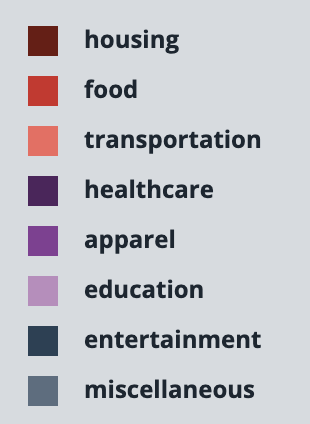The below visualization displays annual median spending, as broken down into eight
categories: housing, food, transportation, healthcare, apparel, education, entertainment, and
miscellaneous. In 2019, Americans on average spent 87% of their earnings on all expenses — which is
an improvement over 1990, when they spent 98% — but, yet, not as prosperous as 2010-2011, when a
mere 79% of earnings would get you everything you need. All and all, though, this chart paints a
rosy picture of the past 30 years. Spending does not fluctuate wildly, and at no point is anyone
living beyond their means.
